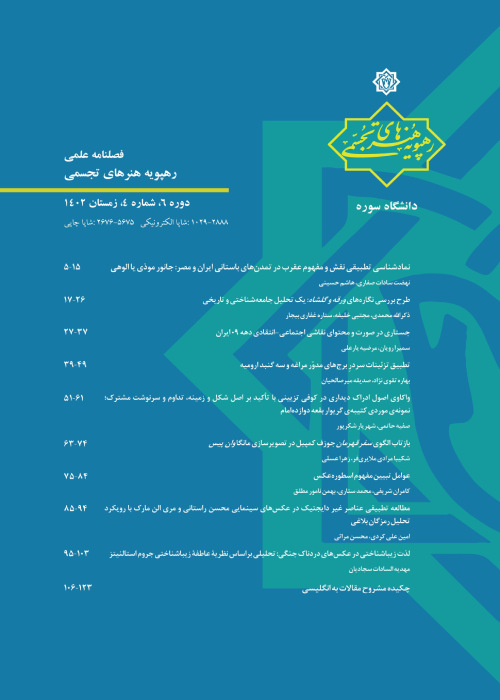The Relation between the Imaginary World and Iranian Painting in a New Analysis of the Court of Kiomars Painting
Author(s):
Article Type:
Research/Original Article (دارای رتبه معتبر)
Abstract:
Iranian painting has always been of interest to researchers and many of them believe that Iranian painting is the manifestation of the Imaginal world and the artist depicts it through the intuition of the Imaginal world and its preservation in the imagination. But recently, this theory has been criticized by some researchers and its drawbacks have been studied. The painting of the court of Kiomars by Sultan Mohammad in Shahnameh of shah Tahmasp as one of the most prominent works of Iranian painting is a suitable case for study and analysis and has attracted the attention of many researchers. In this article, the position of the Imaginal world in the analysis of The Court of Kiomars painting has been studied with a critical approach to the traditionalists' view on Iranian painting. This research has been done by descriptive-analytical method. In this painting, Sultan Mohammad has created an imaginary nature by combining warm and cold colors. The colors in this picture are incredibly bright and pure. Most of the researchers believe that this painting is the manifestation of the Imaginal world. Most of these studies have interpreted Iranian painting based on the views of traditionalists and have followed their path. But reading paintings with this approach has its drawbacks. According to the results of this research, this painting can be considered on the border between abstraction and realism. Realism disappears in some visual elements and provides an opportunity to create an ideal world. Although many elements in this picture call the audience's mind to the Imaginal world, but it can not be considered as an example from the Imaginal world.Certainly, the field of research in Iranian painting is so vast that it is not possible to generalize a specific theory to all paintings. Each of the paintings are created in different conditions, and many factors have a great impact on the creation of a painting such as the artist's skill, his beliefs and adherence to mystical principles and painting, the client, the subject of the work, the space of creation, the available facilities, the pre-painting tradition, historical and cultural conditions and many other factors. So the analysis can’t be based on just one of these factors.Eventually, according to what has been said about the Imaginal world and Iranian painting, the Imaginal world can not take the form of a materialistic painting. After all, what is depicted is all about the material world and It is difficult for people to perceive the Imaginal world and it is not perceived by the senses. It takes a lot of struggle to reach a level where the forms of that world can be seen by the artist and Such a position can not be considered general for all painters. Also, due to the imaginative nature of the image, it can not be attributed to the Imaginal world and suspended forms.
Keywords:
Language:
Persian
Published:
Journal of Rahpooye honar, Volume:4 Issue: 3, 2021
Pages:
49 to 58
https://magiran.com/p2386214


